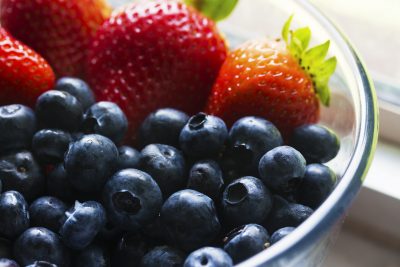The definition of organic is “relating to or derived from living matter”. With regard to the food industry, the definition of organic is somewhat vague. Organic foods are “produced by methods that comply with standards of organic farming”. The issue with this definition is that these standards are not in fact standardized and vary widely throughout the world. Generally speaking, organic farming is meant to protect the environment and allow for renewable resources, encourage the balance in ecological systems and conserve biodiversity. In addition, organic foods are supposed to be produced without solvents, synthetic food additives and irradiation, these standards still allow for some pesticides and fertilizers to be used.
By now, you have probably heard of the “Dirty Dozen Plus” and the “Clean 15″. The “Dirty Dozen Plus” are foods that are recommended to be organic, while the “Clean 15″ can be consumed despite production via conventional farming. These foods were found to have the highest pesticide load by Dr. Andrew Weil in conjunction with the Environmental Working Group (EWG).
The “Dirty Dozen Plus” – these should be organic when eaten
- Apples
- Peaches
- Nectarines
- Strawberries
- Grapes
- Celery
- Spinach
- Sweet Bell Peppers
- Cucumbers
- Cherry Tomatoes
- Snap Peas (Imported)
- Potatoes
- Hot Peppers
- Kale
- Collard Greens
In contrast, the “Clean 15” foods were found to have acceptable levels of pesticides and at this time are felt to be o.k. to be consumed when farmed conventionally with regard to level of pesticides. These include:
- Avocados
- Sweet corn
- Pineapples
- Cabbage
- Sweet Peas (frozen)
- Onions
- Asparagus
- Mangoes
- Papayas
- Kiwi
- Eggplant
- Grapefruit
- Cantaloupe (domestic)
- Cauliflower
- Sweet potatoes
The effects of pesticides are mixed according to the medical literature, and there is not definitive evidence on either side of the argument. One of the reasons for such disagreement is that we are all genetically different and pesticides and toxins affect us differently.
For example, there is genetic variation in a gene called the MTHFR gene. This gene (in combination with others) helps our body with detoxification. If you contain a specific combination of gene mutations, then you may have more difficulty with detoxifying then someone sitting right next to you. In this case, you may be very sensitive to pesticides, while your neighbor is not. Therefore, it would be important for you to eat mainly organic foods, but you neighbor may be able to tolerate a much higher pesticide load in his or her diet.
Some other factors to consider when purchasing foods:
Is the animal grass fed vs grain fed?
Grass fed animals tend to have a better fat profile, meaning more Omega-3 fatty acids (which are anti-inflammatory) vs Omega-6 fatty acids (which are inflammatory). Therefore, grass fed animal fats are healthier for us while grain fed animals skew the diet to be more inflammatory. This is especially important to consider in an individual with a chronic auto-immune disease such as arthritis, lupus, or even those who suffer from asthma.
Is the fish farmed or wild caught?
Not all farmed fish is equivalent. The major concern in the past with farm-raised fish is that they tend to be higher in contaminants such as mercury, PCB’s and antibiotics and lower in omega-3 fatty acids. Wild caught fish are found in their natural environment and are free to eat algae and other natural food sources. Another important concern is the type of fish you are eating. Larger, predatory fish such as salmon, swordfish, king mackerel, marlin, orange roughy, shark, tilefish, and ahi tuna all contain higher levels of mercury then do smaller fish. Therefore, it is important to limit your weekly consumption of such fish.
Recently, companies such as Whole Foods and Wegmans have raised the bar on their fish farming practices. The farmed fish are fed healthier diets enriched with algae, a raised in water that is more closely monitored for contaminants and do not allow the use of antibiotics in the water. In general, wild caught is currently still the best although wild caught fish has a greater carbon foot print.
The take home message is to know where the fish you are buying is coming from and the methods used to raise them. U.S. farmed fish are significantly safer then internationally farmed fish.
Does the food contain added hormones or antibiotics?
Often times antibiotics are used liberally to control the outbreak of diseases on farms and with livestock. The antibiotics can change the bacteria found in our GI tracts and may lead to a condition called gut “dysbiosis”. This alteration of bacteria in our gut has been theorized to contribute to multiple auto-immune conditions as well as anxiety, depression and schizophrenia. In addition, the overuse of antibiotics leads to bacterial resistance and the formation of “super bugs”. Avoiding food and water sources with antibiotics can lessen your exposure and prevent resistance.
Hormones are added to certain animals to make them gain weight faster and increase milk supply. The effects of exposure to chronic low levels of hormones is unknown however, several countries have banned the use of rBGH due to lack of certainty.
The best bet is to eat non-processed, locally sourced food with as few contaminants as possible. Cage free, grass fed, organic food without added hormones and antibiotics is definitely more expensive and will significantly impact your grocery bill. Therefore, it is important to make informed decisions about your food sources and vary your exposure to a multitude of environmental toxins. As far as genetics are concerned, there are blood tests available to look for genetic variations. Though these tests are not recommended for everyone, if you suffer from chronic diseases, fibromyalgia, it is possible they might be of benefit.

